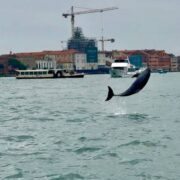PCA’s cavalier attitude

The Philippine Coconut Authority (PCA) has reported that more than 500,000 coconut trees have been infested by the coconut scale insect, also known as “cocolisap,” resulting in a loss of around P200 million.
The situation is “manageable” and is not considered a threat to the coconut industry, the PCA said, since the number of affected trees only accounts for 0.15 percent of the country’s 345 million coconut trees. “This is just a very small portion of the overall number. That’s why we can consider that this is not a threat on a national level,” said PCA administrator Dexter Buted.
But coconut farmers from Calabarzon, Bicol, Western Visayas, Eastern Visayas, Zamboanga Peninsula, Northern Mindanao, Caraga, and the Bangsamoro Autonomous Region in Muslim Mindanao—areas that have been affected by the cocolisap pest infestation—learning about such cavalier attitude from the PCA could only feel despair especially when their livelihood depends on it.
The Kilusang Magbubukid ng Pilipinas (KMP) was right in calling out the government for belittling the infestation, which has already affected some 3,600 coconut farmers nationwide.
“More than 500,000 coconut trees are under attack, yet the government treats this as a minor issue,” said KMP chair Danilo Ramos in a statement. “For farmers who depend entirely on coconut yields, this is a disaster and they have received little to no aid.”
The cocolisap attacks the coconut tree by eating the leaves, fruits, and flowers until only the trunk is left. The pest spreads within an area at a rate of 0.4 kilometers per month.
Scale of destruction
The KMP has requested that the government provide farmers with P25,000 each in financial assistance to cover yield loss and basic recovery needs. Farmers have been sounding the alarm since early 2024, particularly in Zamboanga and Basilan, where the infestations first increased. As of this week, Ramos said, they have not received direct compensation. “This is a clear case of government neglect,” he said.
On the other hand, the PCA said it has treated 355,859 of the 516,962 infested coconut trees, translating to the loss of about 14 million coconuts. It has also allocated P60 million to address the infestation—an amount that Ramos said was “grossly inadequate” given the scale of destruction.
While Ramos conceded that the government has made certain interventions, including the use of the parasitic wasp Comperiella calauanica, he said these must be complemented by urgent financial aid and compensation, input support, and long-term rehabilitation programs.
Better farm management
Filipino coconut farmers are among the poorest in the country and this crisis will only worsen their plight. As Livelihood Funds, an investment fund for agriculture in rural areas, noted, around 50 percent of them live on less than $2 a day.
“A clear majority lack technical support [and] access to market and financing … Farmers are not adequately managed and, as a matter of fact, coconut yields in the Philippines are two to three times lower than in Brazil or in India,” said Livelihood Funds, which is helping coconut farmers in Mindanao to optimize their production and increase yields through better farm management.
The country’s coconut farmers have long been exploited and ignored, and this neglect is once more evident in the government’s response to the cocolisap infestation. Their situation remains appalling despite a Supreme Court decision in 2012 to award the controversial P71 billion coco levy fund to them and even the enactment in March 2021 of Republic Act No. 11524 that sets guidelines for the fund’s management and utilization.
Earlier this month, President Marcos also approved the Coconut Farmers and Industry Development Plan 2024-2028 that will help coconut farmers increase productivity and income, alleviate poverty, and modernize the coconut industry.
Disruptive effect
How many laws, policies, or memoranda must be signed before all these translate into actual action that could uplift the coconut industry? These existing mechanisms are supposed to not only alleviate coconut farmers’ poverty and help them improve their productivity, including intercropping, but they should also be able to assist when problems like cocolisap happens.
There was also a cocolisap crisis that started in 2010, but it took years for the government to address the infestation. By 2014, it had blown up into a major problem that the pest breakout almost wiped out the coconut trees in Calabarzon.
“We are very concerned that though it pales in comparison to the 2014 infestation … it is affecting a lot of areas,” said PCA deputy administrator Roel Rosales. He also acknowledged that “with negligence and less intervention, there is still a possibility of a disruptive effect within the environment.”
The government must act with urgency to prevent the present cocolisap crisis from becoming a full-blown crisis that will inflict a massive blow not only to the farmers but to the economy.
















